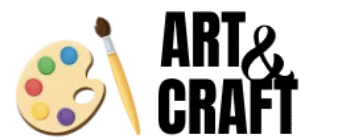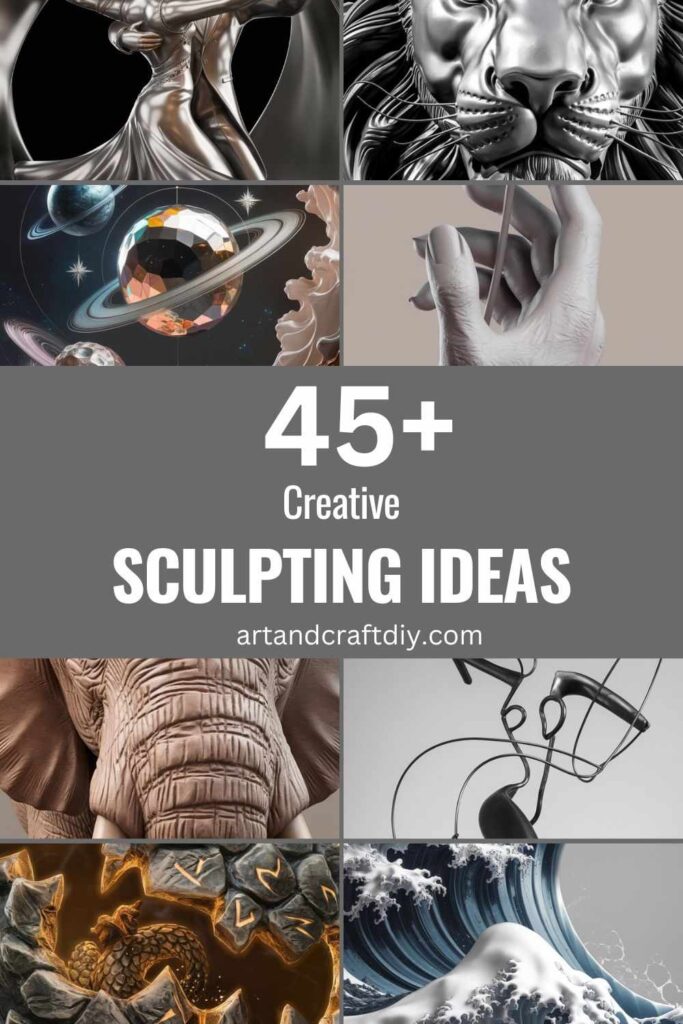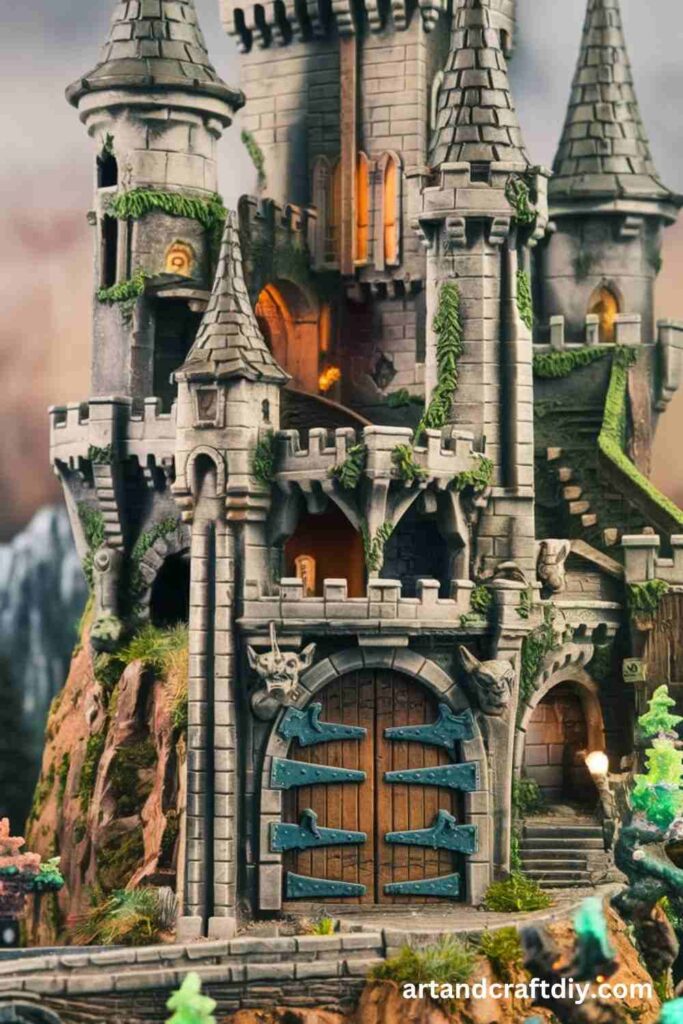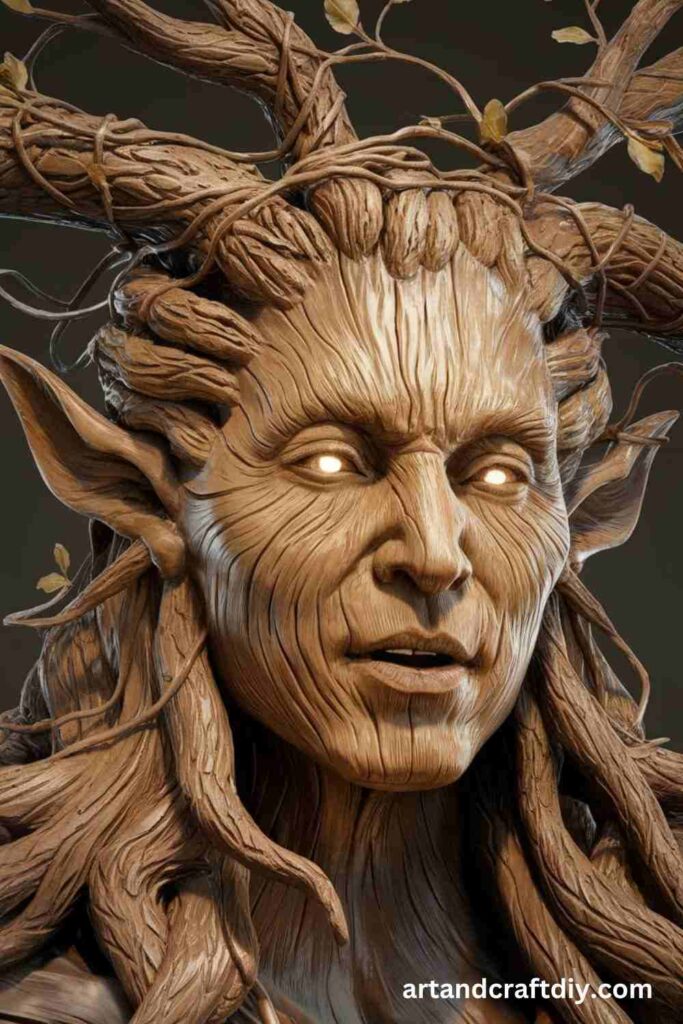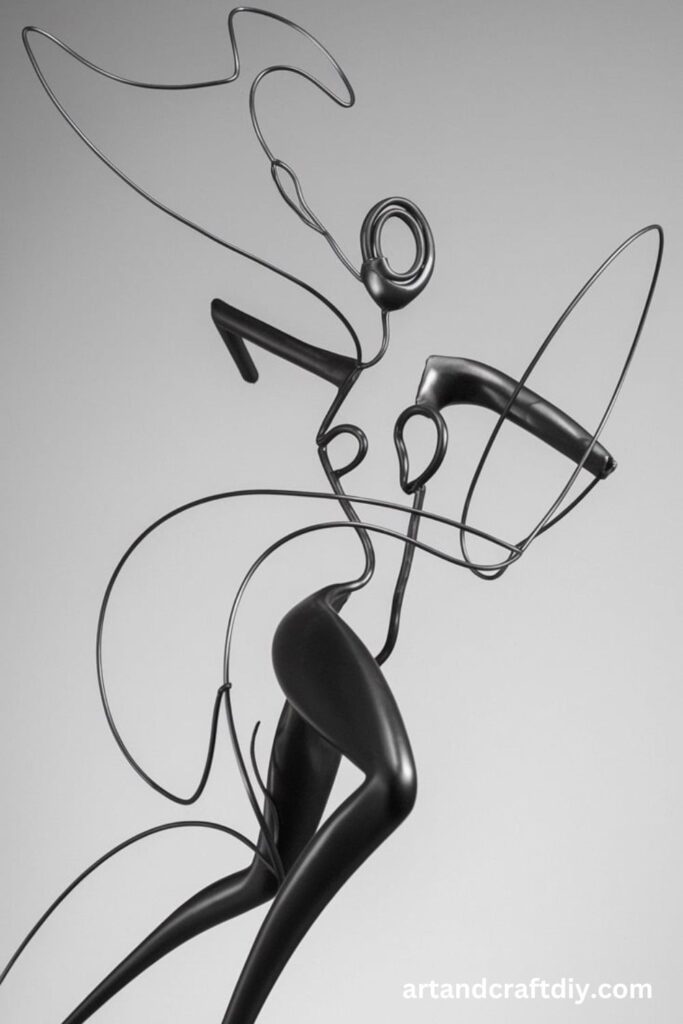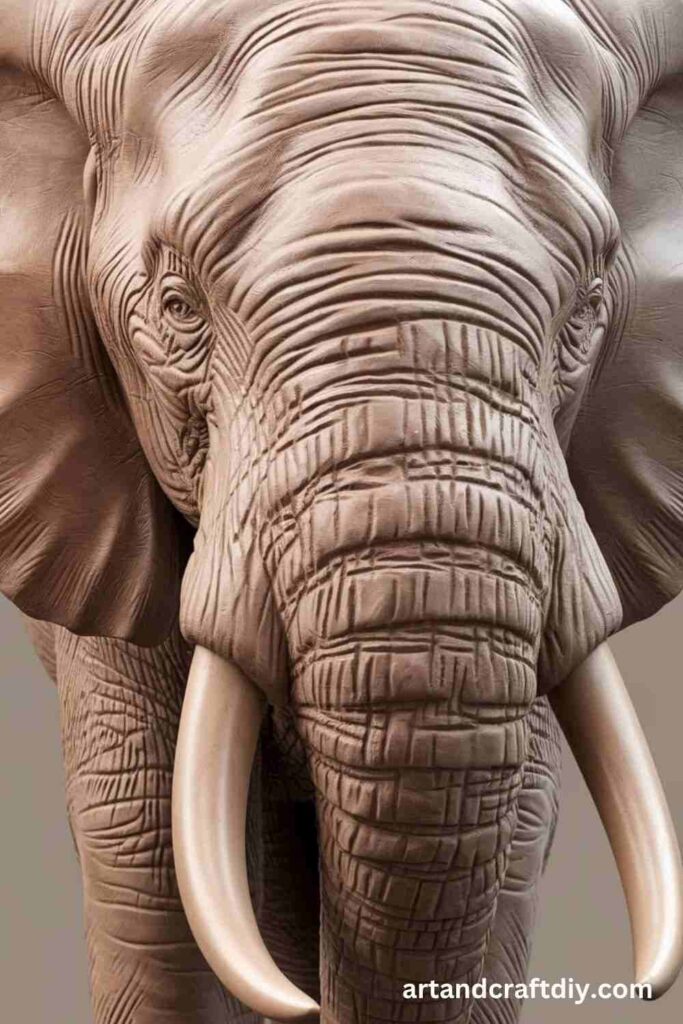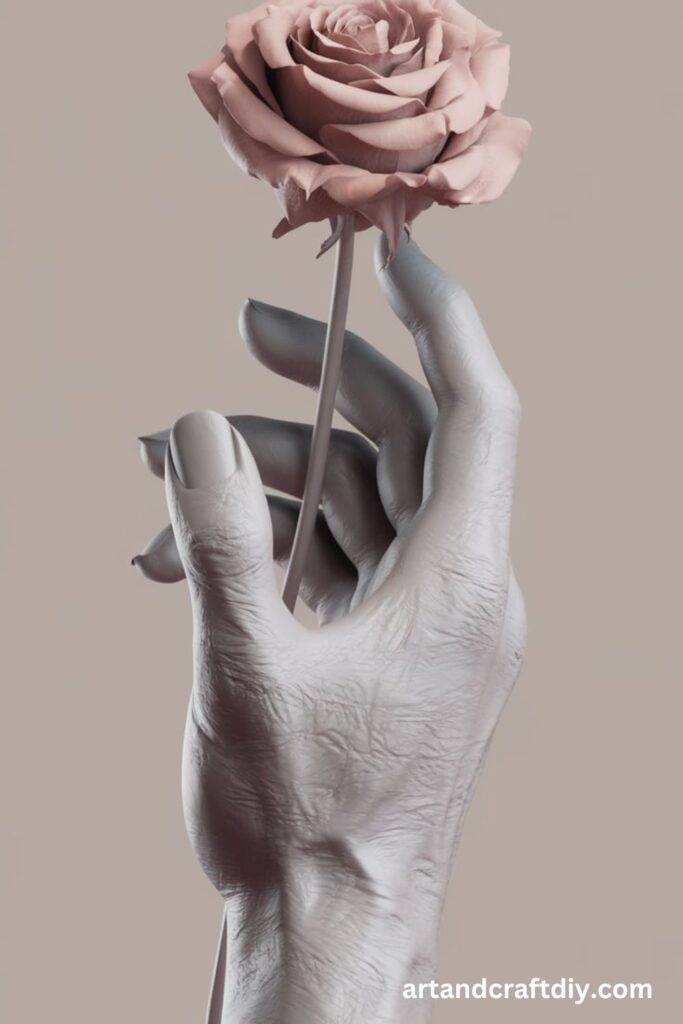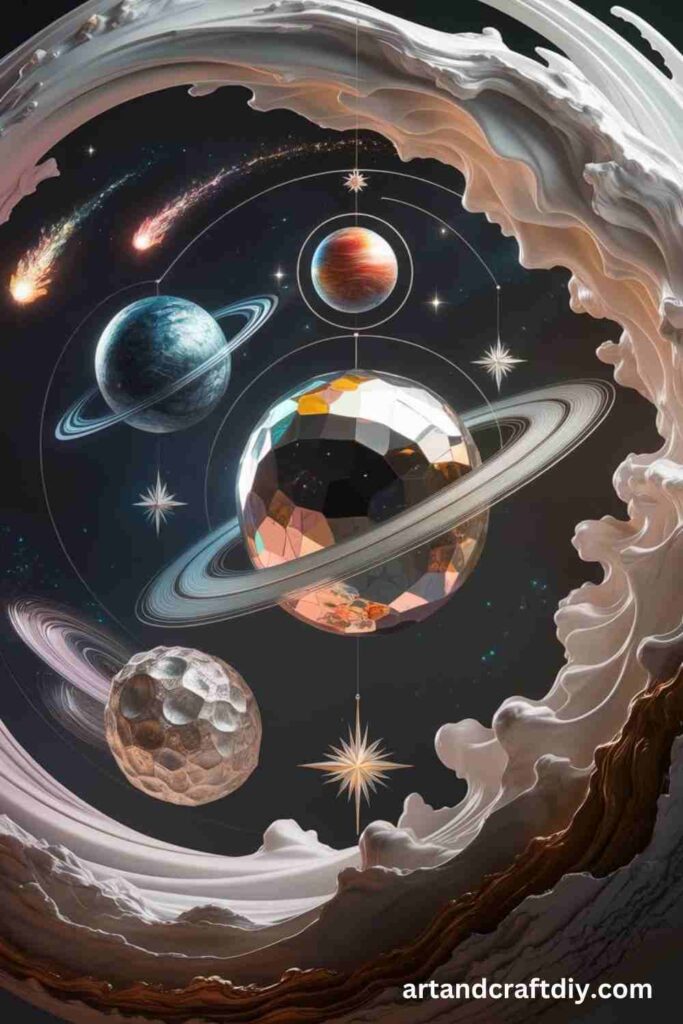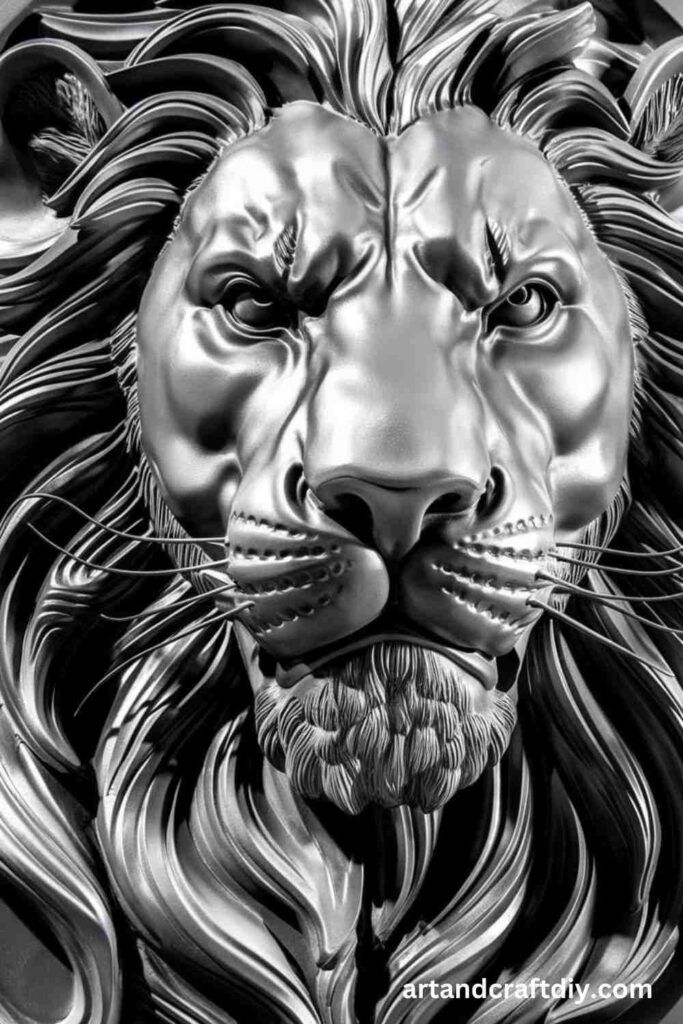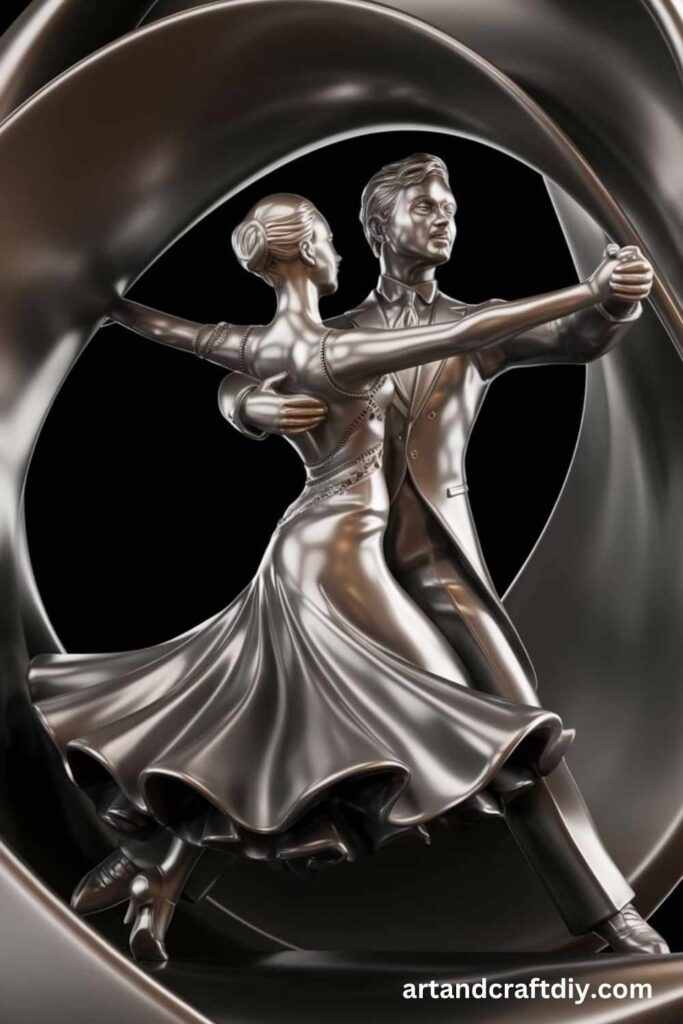Sculpting Ideas is the art of shaping raw, unformed thoughts into refined, meaningful concepts, much like a sculptor chisels away at a block of marble to reveal a masterpiece. This metaphor of sculpting captures the essence of the creative process—starting with a rough vision, carefully refining it, and ultimately shaping it into something tangible and impactful. Just as a sculptor must see the potential within raw material, thinkers, artists, and innovators must recognize the value in their initial ideas and work diligently to develop them. The process of sculpting ideas is crucial in creativity, problem-solving, and innovation, transforming fleeting thoughts into structured, powerful expressions that can inspire and influence the world.
Sculpting Ideas is the process of refining raw thoughts, abstract concepts, and initial inspirations into well-formed, impactful creations. Much like a sculptor starts with an unshaped block of stone or clay, ideas begin as unstructured fragments of imagination, requiring careful attention, iteration, and refinement to reach their full potential. This metaphor of sculpting highlights the deliberate and thoughtful nature of creativity—removing the unnecessary, shaping the essential, and bringing clarity to what was once vague.
Sculpting Ideas
“Sculpting Ideas” is the creative process of shaping abstract thoughts into tangible concepts, much like a sculptor chisels raw material into a masterpiece. It involves brainstorming, refining, and molding ideas into structured, impactful forms—whether in art, design, writing, or innovation. This process encourages experimentation, iteration, and the transformation of imagination into reality.
Miniature Fantasy Castle
Create a small, magical castle inspired by fairy tales.
Materials: Air-dry clay, sculpting tools, water, acrylic paint.
Steps:
- Sketch the castle design.
- Roll clay into cylinders for towers and shape walls with slabs.
- Attach turrets and details like windows using a sculpting knife.
- Let the clay dry completely.
- Paint the castle in stone or vibrant fantasy colors.
Tree Spirit Face
Carve a mystical face into wood or clay to give it a spiritual feel.
Materials: Wood or polymer clay, carving tools, paint.
Steps:
- Select a piece of wood or shape clay into an oval.
- Carve or sculpt facial features, making them blend into bark-like textures.
- Add details like vines, mushrooms, or leaves.
- Sand if needed and paint for added depth.
Ocean Wave Sculpture
Capture the power of ocean waves in a dynamic sculpture.
Materials: Resin, mold, acrylic paints, sandpaper.
Steps:
- Pour the first layer of resin for the water base.
- Shape waves using additional layers of resin.
- Add white acrylic highlights to create seafoam effects.
- Sand and polish for a smooth finish.
Dragon Egg Sculpture
Make a fantasy-inspired dragon egg with textures and shine.
Materials: Polymer clay, metallic paint, sculpting tools.
Steps:
- Form an egg shape with clay.
- Use a knife or ball stylus to create scale textures.
- Bake according to clay instructions.
- Paint with metallic or iridescent colors.
Abstract Wire Figure
Create a dynamic, abstract human form using wire.
Materials: Aluminum wire, pliers, wooden base.
Steps:
- Sketch a simple human figure pose.
- Bend wire to form the arms, legs, and torso.
- Wrap thinner wire for additional detailing.
- Attach to a wooden base for stability.
Elephant Bust in Clay
Sculpt an expressive elephant head with detailed wrinkles.
Materials: Air-dry clay, sculpting tools, acrylic paint.
Steps:
- Shape the general form of the head.
- Sculpt large ears and long, curled trunk.
- Carve wrinkles and skin texture.
- Let dry, then paint with realistic shading.
Hand Holding a Rose
Capture an elegant gesture with a sculpted hand and flower.
Materials: Polymer clay, sculpting tools, wire for support.
Steps:
- Shape the fingers individually, then attach them.
- Form a delicate rose and attach to fingers.
- Bake and paint for realism.
Space-Themed Planet Mobile
Create a floating planet display for a cosmic touch.
Materials: Clay, wire, acrylic paint, string.
Steps:
- Sculpt planets in different sizes.
- Paint them with realistic or artistic patterns.
- Attach to a frame using string for a mobile effect.
Lion’s Head Relief Sculpture
A majestic lion’s head carved in relief for wall decor.
Materials: Clay or wood, carving tools, paint.
Steps:
- Sketch the lion’s face onto the material.
- Carve or sculpt deep-set eyes and a fierce mane.
- Add texture for fur details.
- Paint with golden and brown shades.
Dancing Couple Silhouette
Express motion with a fluid, abstract dancing couple.
Materials: Wire, clay for base, paint.
Steps:
- Form two figures in an intertwined pose using wire.
- Cover parts with clay for volume.
- Paint in a single color for a striking silhouette.
Fairy House from Natural Materials
Make a tiny house using twigs, leaves, and clay.
Materials: Twigs, air-dry clay, moss, hot glue.
Steps:
- Form a base with twigs and clay.
- Build walls and a whimsical roof.
- Add moss for a magical touch.
Steampunk Robot Bust
Create a vintage robotic sculpture with gears and pipes.
Materials: Clay, metal pieces, gears, paint.
Steps:
- Shape the robot’s head and chest from clay.
- Attach small gears and pipes for a mechanical look.
- Paint with metallic shades for an aged effect.
Bird Nest with Eggs
A delicate and detailed nest with tiny eggs.
Materials: Polymer clay, wire, acrylic paint.
Steps:
- Roll thin clay strands for twigs and shape a nest.
- Form small eggs and place inside.
- Paint with earthy tones.
Crumbling Ancient Statue
A realistic, weathered sculpture of an old statue fragment.
Materials: Air-dry clay, carving tools, paint.
Steps:
- Sculpt a face or torso with cracks and broken edges.
- Add texture for an aged look.
- Paint with stone effects.
Fox Curled in a Ball
A cozy fox sleeping in a curled-up position.
Materials: Polymer clay, paint, sculpting tools.
Steps:
- Form a curled-up body and head.
- Sculpt fur texture and closed eyes.
- Paint with warm orange and white tones.
Melted Clock Sculpture
Inspired by Salvador Dalí, create a surreal, melting clock.
Materials: Polymer clay, wire for support, acrylic paint.
Steps:
- Shape an oval base for the clock face.
- Extend the edges downward to create a melting effect.
- Add numbers and hands in a distorted manner.
- Bake and paint in metallic and antique colors.
Whale Breaching the Ocean
Capture a majestic whale leaping from the sea.
Materials: Polymer clay, resin for water, sculpting tools.
Steps:
- Sculpt a whale in a curved pose.
- Use resin or clay to create water splashes.
- Paint with realistic ocean shades.
Gothic Gargoyle Bust
Create a detailed gargoyle with wings and fangs.
Materials: Air-dry clay, sculpting tools, paint.
Steps:
- Shape a rough bust with sharp features.
- Add wings, horns, and menacing eyes.
- Texture the stone-like surface and paint in gray tones.
Totem Pole Miniature
Carve or sculpt a symbolic tribal totem.
Materials: Wood, carving tools, paint.
Steps:
- Stack small blocks or carve a solid piece.
- Add faces, animals, and cultural symbols.
- Paint in bright, earthy tones.
Dinosaur Skull Replica
A prehistoric-themed sculpture of a fossilized skull.
Materials: Clay, carving tools, sandpaper, paint.
Steps:
- Shape the skull structure with rough details.
- Carve deep eye sockets and cracks.
- Texture for a fossilized look and paint in bone colors.
Sun and Moon Wall Art
Create a celestial balance of day and night.
Materials: Clay, carving tools, paint.
Steps:
- Sculpt a circular sun and moon intertwined.
- Carve swirling patterns or facial expressions.
- Paint one side golden and the other silver or blue.
Fallen Angel Statue
A dramatic winged angel in a sorrowful pose.
Materials: Air-dry clay, sculpting tools, paint.
Steps:
- Shape a sitting or kneeling figure.
- Sculpt large wings with feather details.
- Add cracks or broken pieces for emotion.
Phoenix Rising from Flames
A legendary bird emerging from fire.
Materials: Wire, polymer clay, resin, paint.
Steps:
- Shape the bird’s body and wings with wire.
- Add layers of clay for feathers.
- Sculpt flames around it using resin or translucent clay.
- Paint with fiery gradients of red, orange, and yellow.
Forest Guardian Creature
A mythical protector of the woods with tree-like features.
Materials: Polymer clay, twigs, moss, paint.
Steps:
- Sculpt a humanoid figure with bark-like skin.
- Attach twigs as antlers or armor.
- Paint in earthy tones and add moss for realism.
Floating Island Sculpture
A fantasy-inspired floating landmass with trees and waterfalls.
Materials: Clay, wire for support, resin for water.
Steps:
- Shape a rocky island with cliffs and greenery.
- Sculpt waterfalls with resin.
- Attach to a hidden base to create a floating illusion.
Crystal Cave Diorama
A miniature glowing cave filled with colorful crystals.
Materials: Clay, resin, LED lights, paint.
Steps:
- Sculpt rocky cave walls.
- Create crystals with translucent resin.
- Install small LED lights inside for glow effects.
Chess Set with Mythical Creatures
Design a full chess set with fantasy creatures.
Materials: Polymer clay, sculpting tools, paint.
Steps:
- Sculpt unique chess pieces (dragons, knights, sorcerers, etc.).
- Create bases for each piece.
- Paint in metallic or enchanted tones.
Miniature Viking Ship
A historical Viking longboat with fine details.
Materials: Wood or clay, carving tools, paint.
Steps:
- Shape the boat hull with curved edges.
- Add shields, a dragon figurehead, and sails.
- Paint with aged wood textures.
Mermaid Sitting on a Rock
A graceful mermaid with flowing hair and a shimmering tail.
Materials: Polymer clay, sculpting tools, paint.
Steps:
- Shape the mermaid’s body and tail.
- Sculpt hair flowing around her.
- Paint the tail with iridescent or pearlescent colors.
Haunted House Sculpture
A spooky, detailed miniature haunted house.
Materials: Polymer clay, wire for structure, LED lights.
Steps:
- Shape the house with warped architecture.
- Add creepy windows, doors, and cobweb details.
- Paint in dark, eerie shades and add lights inside.
Refining Raw Concepts: From Abstract to Tangible
Every great idea starts as a raw, unshaped concept. The process of refining an idea involves turning abstract thoughts into something concrete, functional, and impactful. This journey is rarely linear—it requires multiple iterations, feedback loops, and overcoming creative blocks. By embracing a structured approach to refining ideas, creators can transform rough beginnings into polished results.
Key Aspects of Refining Raw Concepts
1. From Abstract to Tangible
- Ideas often start as vague concepts that need structure and form.
- Visualization tools like mind maps, sketches, or written outlines help solidify abstract thoughts.
- Defining key goals and objectives early on provides direction.
2. The Power of Iteration
- The first version of an idea is rarely the best—continuous refinement is essential.
- Rough drafts, prototypes, and mock-ups allow for exploration and experimentation.
- Iterative development helps identify weaknesses and improve the final output.
3. Overcoming Creative Blocks
- Stagnation is natural in the creative process; stepping away can offer fresh perspectives.
- Techniques like brainstorming, changing environments, or collaborating with others can reignite creativity.
- Setting realistic deadlines prevents perfectionism from stalling progress.
Tools for Sculpting Ideas
The process of transforming abstract concepts into tangible forms requires a range of tools that help shape, refine, and visualize ideas. Whether through hands-on methods, cutting-edge digital technology, or group collaboration, these tools allow creators to explore different facets of their imagination. Here’s a breakdown of the key tools available for sculpting ideas:
-
Analog Tools:
- Sketching: The act of drawing is a time-tested method for exploring visual ideas, whether on paper or in a notebook. It allows for free-flowing creativity without technical barriers.
- Clay Modeling: Using materials like clay or other sculpting mediums enables a hands-on approach to creating three-dimensional forms. This tactile process can bring ideas to life in a physical way.
- Journaling: Writing down thoughts, concepts, and reflections helps solidify abstract ideas and unlock new connections. A journal can be a space for free thought and creative exploration.
-
Digital Tools:
- Design Software: Programs like Adobe Creative Suite or Illustrator offer powerful tools for visual design, allowing for precision and advanced manipulation of graphics and concepts.
- AI-Assisted Creativity: AI tools can aid in generating and refining ideas, often suggesting new directions, combinations, or variations that the creator might not have considered.
- 3D Modeling: Software such as Blender or AutoCAD allows for the creation of three-dimensional models, enabling users to visualize complex structures or objects in a virtual space.
FAQ
What is sculpting?
Sculpting is the art of creating three-dimensional objects by shaping materials such as clay, stone, metal, or wood. Artists use various techniques to carve, model, or assemble these materials into intricate or abstract forms.
What materials are best for sculpting?
Common materials for sculpting include clay (like polymer or modeling clay), stone, metal, wood, and wax. The choice of material depends on the desired outcome, level of detail, and whether the sculpture is for indoors or outdoors.
Can I sculpt if I’m a beginner?
Yes, absolutely! Beginners can start with simple projects using easy-to-work-with materials like clay. Many artists begin their sculpting journey by working with soft materials to get a feel for the process before advancing to harder substances.
What are some sculpting ideas for beginners?
For beginners, some sculpting ideas might include simple shapes like geometric forms, animals, or small busts. You could also try creating abstract sculptures or even miniature versions of everyday objects to practice techniques and improve your skills.

Hi, I’m Victoria, an art and craft teacher at Newark City Schools, where I have the joy of working with middle school students to help them explore their creativity and develop their artistic talents. I believe that art is a powerful way for students to express themselves, and I strive to make every lesson a fun, engaging, and inspiring experience.
I created this website to share the art and craft projects, techniques, and resources that I use in my classroom, hoping to inspire both educators and young artists alike. Whether you’re a teacher looking for new ideas or a student eager to try something new, I’m excited to provide creative tools and projects that anyone can enjoy.
When I’m not in the classroom, I love experimenting with different art forms and learning new crafting techniques. My goal is to help others discover the joy of making things with their hands, and I hope my website serves as a space for everyone to explore their creative potential.
